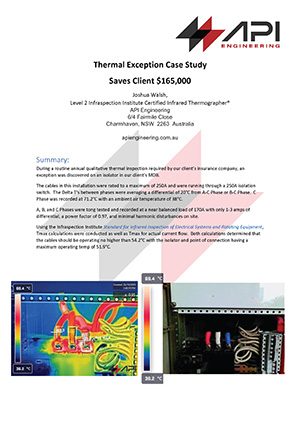Article of the Month
Thermal Exception Case Study
Date: November 18, 2025

During a routine annual qualitative thermal inspection required by our client’s insurance company, an exception was discovered on an isolator in our client’s MDB.
Read More
Read More
Advertisement
Related Articles
Detecting Contamination and Preventing Insulator Flashovers: Why UV Imaging Is a Critical Tool for Utilities
June 18, 2025

